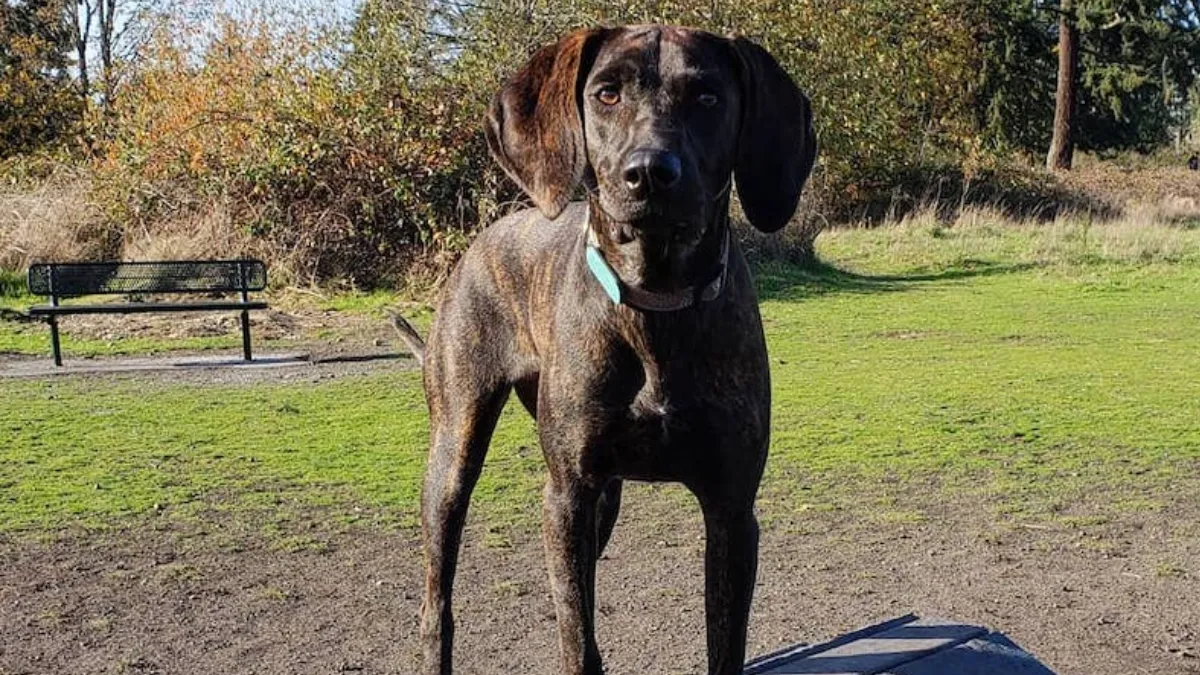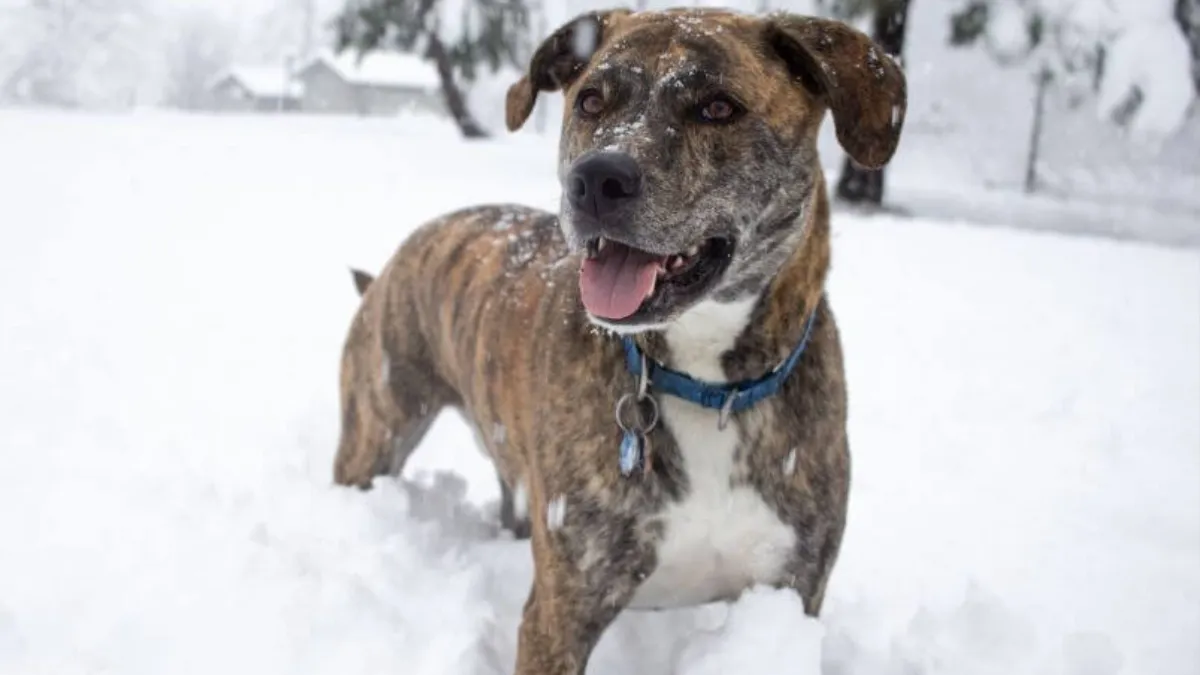Plott hounds, originating in North Carolina, are renowned for their hunting prowess. A common concern for potential owners is whether they bark excessively. This raises the question: Do Plott Hounds Bark a Lot? Excessive barking can pose challenges, potentially leading to disturbances and legal issues in certain areas. Understanding their barking tendencies is crucial for prospective adopters, ensuring compatibility with living situations and neighbors. While Plott hounds may vocalize as part of their hunting instincts, proactive training and socialization can mitigate excessive barking. As with any breed, individual temperament varies, making it essential for potential owners to address this concern and establish effective communication with their Plott hound to foster a harmonious relationship in both rural and urban settings.

Plott hounds were originally bred for hunting and tracking games, which often involved barking to alert the human companions of their prey's location. As a result, Plott hounds do tend to bark, but this does not necessarily mean they bark excessively. Like any breed, individual Plott hounds may have different personalities and levels of vocalization. It is important to note that proper training and socialization can help reduce any excessive barking tendencies in Plott hounds.
As the state dog of North Carolina, Plott hounds are a beloved breed among many residents of the state. Their hunting abilities and loyalty to their owners make them a popular choice for those looking for a hunting companion or a family pet. While their barking tendencies may be a concern for some, with proper training and socialization, Plott hounds can make wonderful and well-behaved pets.
Breed Overview
Origin and History
The Plott Hound is a breed of hunting dog that originated in the United States, specifically in the southern Appalachian Mountains. The breed was developed by a German immigrant named Johannes Plott in the mid-1700s. Plott's goal was to create a versatile hunting dog that could track and tree large game such as bear and wild boar. The Plott Hound is recognized by the American Kennel Club (AKC) as a member of the hound group.
Physical Characteristics
The Plott Hound is a medium to large breed, typically weighing between 40 and 60 pounds and standing 20 to 25 inches tall at the shoulder. The breed is known for its distinctive brindle coat, which can range in color from black to red to brown. Plott Hounds have a muscular build and are known for their stamina and endurance, making them well-suited for hunting.

Temperament and Behavior
Plott Hounds are intelligent, friendly, and loyal dogs. They are also known for their fearlessness and protective nature, which makes them excellent hunting companions. The breed has a strong prey drive and requires plenty of exercise and mental stimulation to stay happy and healthy. Plott Hounds are active and alert dogs, but they can also become sad and stubborn if they are not given enough attention and exercise.
Overall, the Plott Hound is a versatile and hardworking breed that is well-suited for hunting and other outdoor activities. With proper training and socialization, they can also make loving and loyal family pets.
Barking and Vocalization
Understanding Barking
Plott Hounds are known for their loud and distinctive barking. They are vocal dogs and will bark to communicate with their owners and other animals. Barking is a natural behavior for dogs and is a way for them to express themselves. However, excessive barking can become a problem and may disturb neighbors.
It is important to understand why your Plott Hound is barking. They may bark for attention, to alert their owners of danger, or to communicate with other dogs. By understanding the reason behind their barking, owners can address the behavior appropriately.
Training to Manage Barking
Training is an effective way to manage a Plott Hound's barking. Socialization is an important aspect of training, as it helps dogs become comfortable around other animals and people. This can reduce their need to bark excessively.
Positive reinforcement is another effective way to manage barking. Rewarding good behavior can encourage dogs to repeat that behavior. Owners can also use commands such as "quiet" or "enough" to train their Plott Hounds to stop barking.
Owners need to remain patient and consistent when training their Plott Hounds. Excessive barking is a natural behavior for these dogs, and it may take time to modify the behavior. With proper training and socialization, owners can manage their Plott Hound's barking and prevent it from becoming a problem.
Health and Care
Common Health Issues
Like all dog breeds, Plott Hounds are prone to certain health issues that owners should be aware of. While most Plott Hounds are generally healthy, it is important to keep up with regular vet check-ups to catch any potential problems early.
One common health issue that Plott Hounds may experience is hip dysplasia. This is a genetic condition that affects the hip joint and can lead to arthritis and mobility issues. Owners should be sure to keep their Plott Hounds at a healthy weight and provide plenty of exercise to help prevent hip dysplasia.
Another health issue to watch out for is bloat, which is a potentially life-threatening condition that can occur when a dog's stomach fills with gas and twists. Plott Hounds are at a higher risk for bloat due to their deep chests, so it is important to feed them smaller meals throughout the day and avoid exercise immediately after eating.
Grooming and Maintenance
Plott Hounds have a short coat that is relatively easy to maintain. Regular brushing can help remove loose hair and keep their coat shiny and healthy. Owners should also make sure to keep their Plott Hound's teeth clean by brushing them regularly or providing dental chews.
In terms of exercise, Plott Hounds are an active breed that requires daily physical activity to stay healthy and happy. Owners should provide plenty of opportunities for exercise, such as daily walks or runs, and may also want to consider enrolling their Plott Hound in activities such as agility or tracking.
Overall, with proper care and attention, Plott Hounds can make wonderful pets for active families.
Living with a Plott Hound
Plott Hounds are known for their loyalty, intelligence, and hunting abilities. They are also known for their tendency to bark, which can be a challenge for some owners. However, with proper training and socialization, Plott Hounds can make excellent family pets.
Exercise Needs
Plott Hounds are active dogs that require daily exercise to stay healthy and happy. They enjoy running and playing outdoors, and they need regular walks on a leash. Plott Hounds also benefit from mental stimulation, such as training sessions and interactive toys.
Social Aspects
Plott Hounds are social dogs that enjoy the company of their owners and other dogs. They can be good with children and other pets if they are socialized from a young age. However, Plott Hounds have a strong prey drive and may not be suitable for homes with cat periods or other small animals.

Training and Mental Stimulation
Plott Hounds are intelligent dogs that respond well to positive reinforcement training. They are eager to please and enjoy learning new things. Plott Hounds also benefit from mental stimulation, such as puzzle toys and interactive games.
In summary, living with a Plott Hound can be a rewarding experience for owners who are willing to provide them with the exercise, socialization, and mental stimulation they need. With proper training, Plott Hounds can make excellent family companions, hunting dogs, and protectors.
Plott Hound in Hunting
Hunting Traits
As a hunting dog, Plott Hounds are known for their exceptional tracking and hunting abilities. They have a strong prey drive, which makes them ideal for hunting wild boar and bears. Their stamina and endurance allow them to keep up with the hunter during long hunts.
The Plott Hound's sense of smell is highly developed, which makes them excellent trackers. They can pick up the scent of their prey from a distance and follow it for miles. They are also fearless and will not hesitate to confront their prey.
Suitability for Various Hunts
Plott Hounds are versatile hunting dogs that can adapt to different hunting styles and terrains. They are suitable for various hunts, including big game hunting, coon hunting, and squirrel hunting. They are also excellent treeing dogs, which means they can track and corner their prey in trees.
Their intelligence and trainability make them a favorite among hunters. They are quick learners and can be trained to follow commands and work in a pack. They are also loyal and protective of their hunters, which makes them great companions.
In conclusion, the Plott Hound is a highly skilled hunting dog that is suitable for various hunts. Their hunting traits, including their prey drive, stamina, and sense of smell, make them ideal for hunting wild boar and bears. Their versatility and trainability make them a favorite among hunters.
Breed Considerations
Pros and Cons
As with any breed, there are both pros and cons to owning a Plott Hound. One of the most well-known characteristics of the breed is their tendency to bark, which can be a pro or a con depending on the owner's preferences and living situation. Plott Hounds are also highly intelligent, loyal, and energetic, making them great companions for active families. However, their high energy levels can also make them difficult to train and control, especially for first-time dog owners.
Another potential con of owning a Plott Hound is their tendency towards aggression and fear towards strangers. This makes socialization and training especially important for this breed. Plott Hounds can also be prone to separation anxiety if left alone for long periods, so they may not be the best choice for owners who work long hours.
On the pro side, Plott Hounds are known for their excellent hunting abilities and make great companions for hunters. They also have a relatively long lifespan of 12-14 years and come in a variety of colors and coats, including buckskin and saddle. Both male and female Plott Hounds make great pets, and they are generally good with kids and families if socialized properly.

Choosing a Plott Hound
When choosing a Plott Hound, it is important to find a reputable breeder who prioritizes the health and well-being of their puppies. Be sure to ask about any health issues that may be common in the breed, such as hip dysplasia. Plott Hounds can also be prone to obesity, so it is important to monitor their diet and exercise levels.
It is also important to consider the personality and temperament of the individual dog when choosing a Plott Hound. If you are looking for a companion animal, be sure to choose a dog that is well-socialized and comfortable around people. If you are looking for a hunting dog, choose a dog with a strong prey drive and good hunting instincts.
Overall, Plott Hounds can make great companions for the right owner. With proper training and socialization, they can be loyal, loving, and energetic pets. However, potential owners should be aware of the breed's tendencies towards barking, aggression, and separation anxiety and be prepared to provide the necessary training and attention to ensure a happy and healthy dog.
Conclusion:
In conclusion, the exploration of "Do Plott Hounds Bark a Lot?" sheds light on their vocal tendencies. While Plott Hounds may exhibit barking habits, understanding the nuances of their vocalizations is crucial for potential owners. Acknowledging the breed's hunting background and implementing proactive training measures can mitigate excessive barking. The individual temperament of each Plott Hound plays a significant role, emphasizing the need for personalized approaches.
Addressing concerns about barking is essential to ensure a harmonious living environment and positive relationships with neighbors. By delving into the barking habits of Plott Hounds, prospective owners can make informed decisions, fostering a strong bond with their canine companions while respecting the considerations of both rural and urban living situations.




